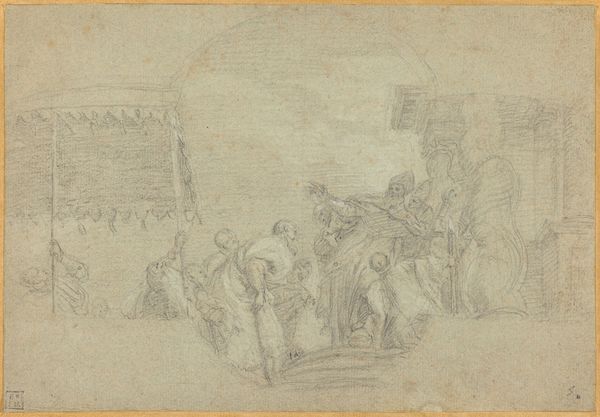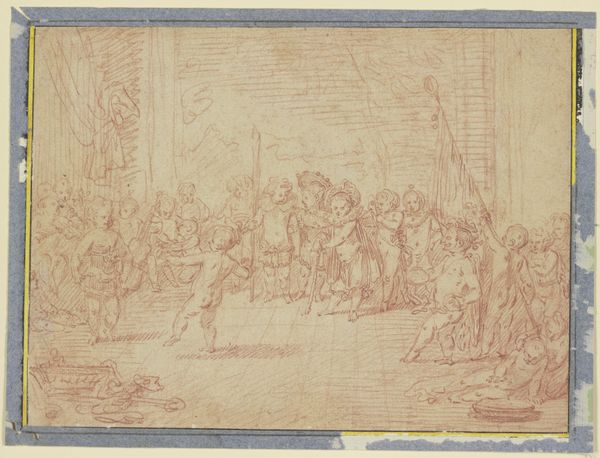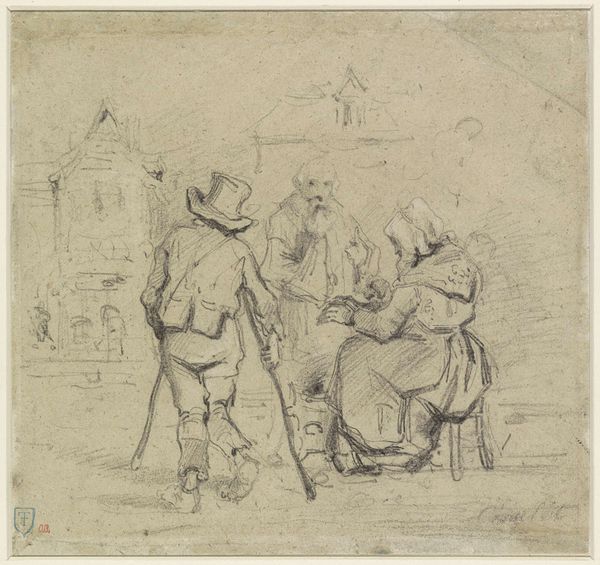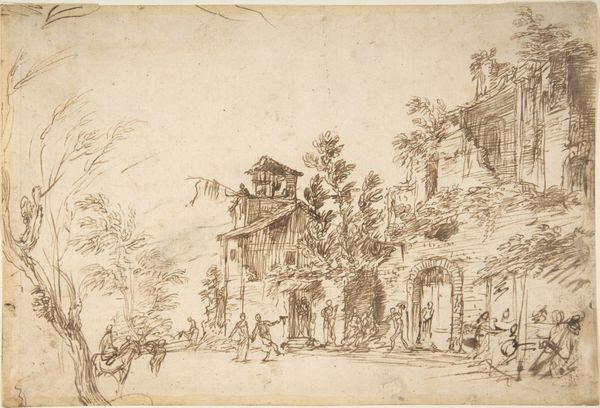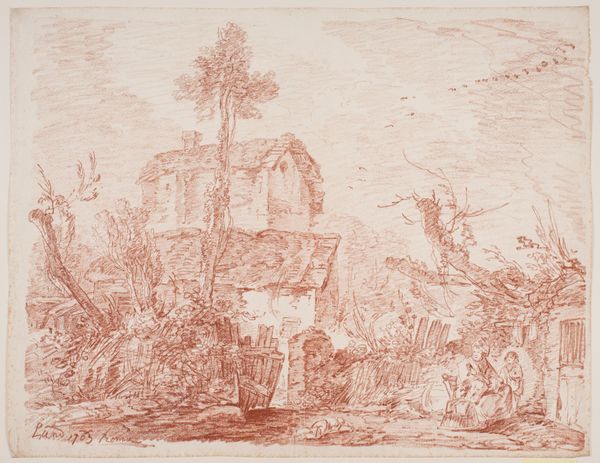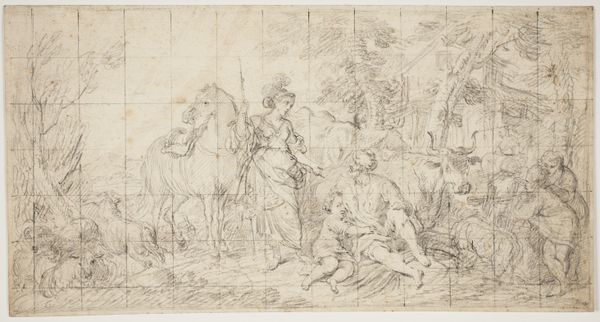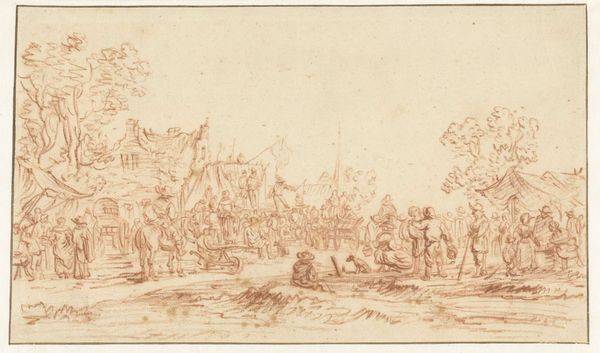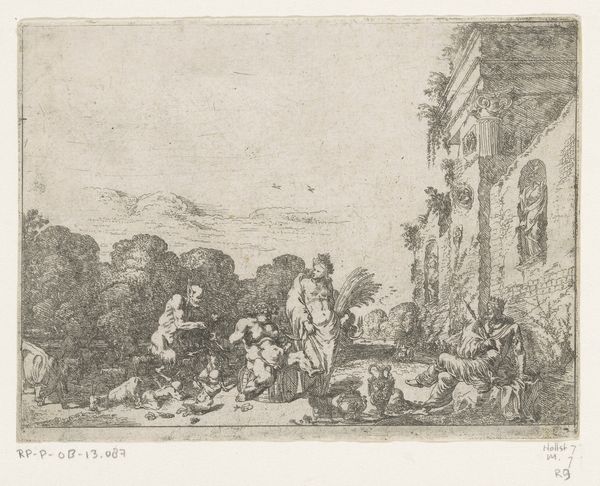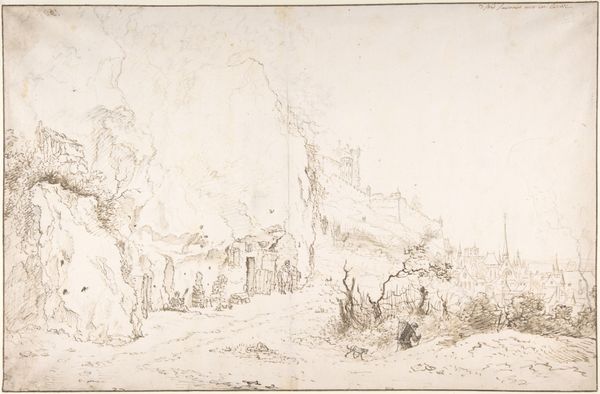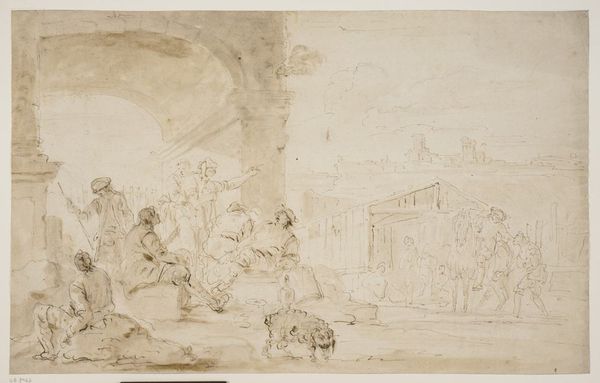
Dimensions: height 148 mm, width 195 mm
Copyright: Rijks Museum: Open Domain
Curator: Looking at this etching, made with ink on paper, I’m immediately drawn to the somewhat mournful feeling. The monochromatic, reddish-brown ink wash creates an aged effect. What do you see? Editor: Well, this work, created by Johannes Körnlein around 1772, is called "Man met paard bij wasvrouw"—"Man with Horse by Laundress" in English. For me, this piece conjures questions of gendered labor and itinerant lives within the broader economy of the 18th century. Who are these women, and how are they situated in relation to the man and his horse? Curator: Laundresses, traditionally. But consider the horse – a crucial symbol throughout history, often representing power, freedom, even war. Here, though, it appears tired, burdened. What does that shift signify? Is it simply the toil of travel, or does it hint at broader societal fatigue? Editor: Perhaps. We can unpack that symbolic weight. Notice the position of the women and the horse relative to each other. The man appears to be an outsider who doesn't quite occupy either of their worlds, maybe this points at class dynamics. Consider the power dynamics embedded within this encounter: The women are actively laboring in domestic spheres, while the man passes through on horseback. How are we implicated in this circulation? Curator: I find it compelling how the artist chose to depict such a mundane scene using Baroque elements – the sweeping lines, the focus on human activity within the landscape... The lines describing both horse and women are given almost equal symbolic import; and for both, that weight comes at a cost. It’s such a powerful statement on unseen labor. Editor: The very act of immortalizing this fleeting encounter through etching seems like an acknowledgement of its significance. We have to keep in mind this image comes from the time that saw shifts in the ways that everyday people were regarded by not only visual culture but philosophical schools of thought too. It allows us to look into how we see gendered roles as both burden and potential sources of collective resistance. Curator: Exactly. And perhaps, this everyday-ness holds the very key to disrupting power imbalances and recognizing that women carry an undue load. Editor: Thinking about the historical period combined with Körnlein’s composition compels us to continue critiquing our own present moment as well. The symbolisms within a deceptively quotidian tableau such as this challenge our role as viewers to deconstruct assumptions, and in its own way, this artwork advocates change.
Comments
No comments
Be the first to comment and join the conversation on the ultimate creative platform.
